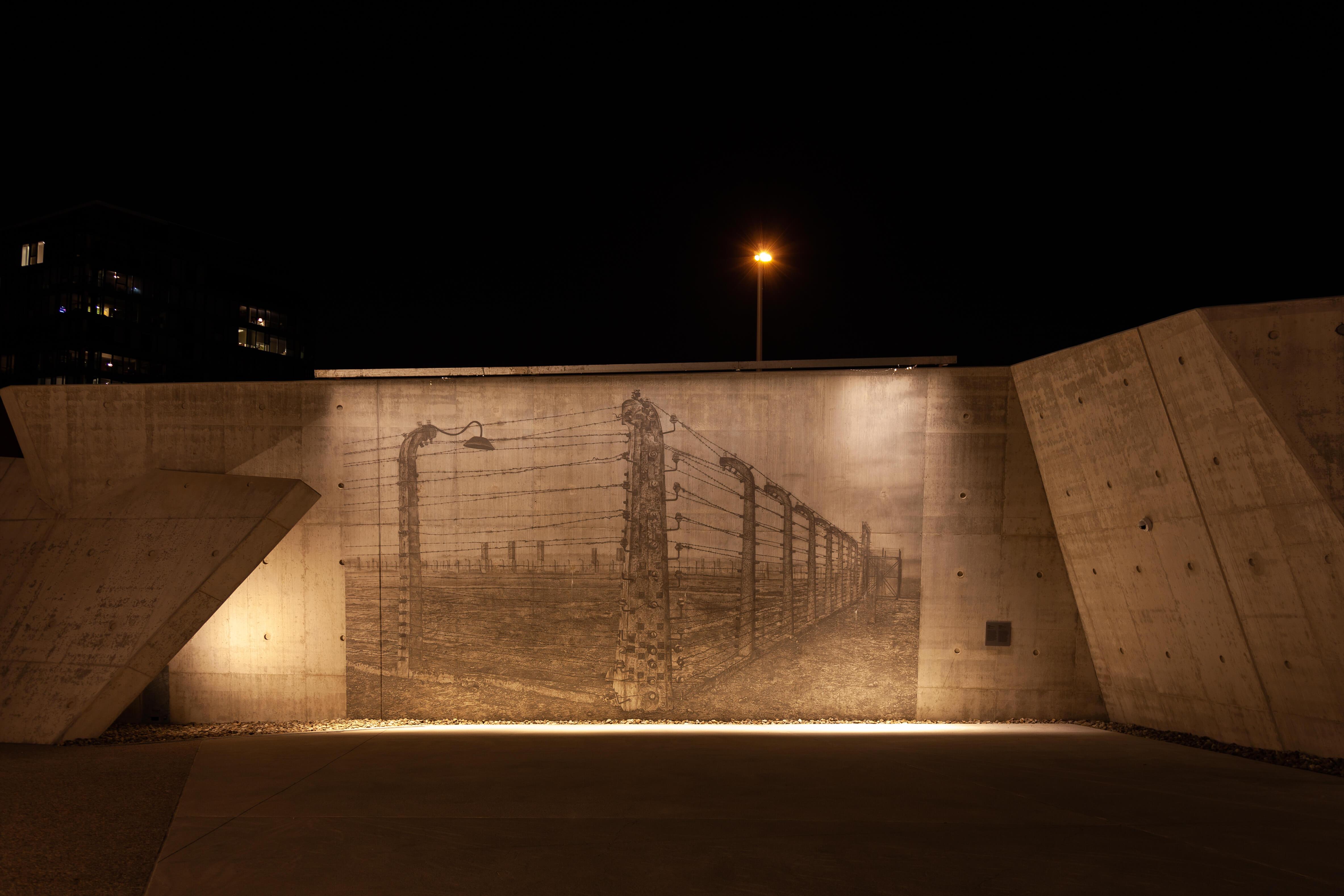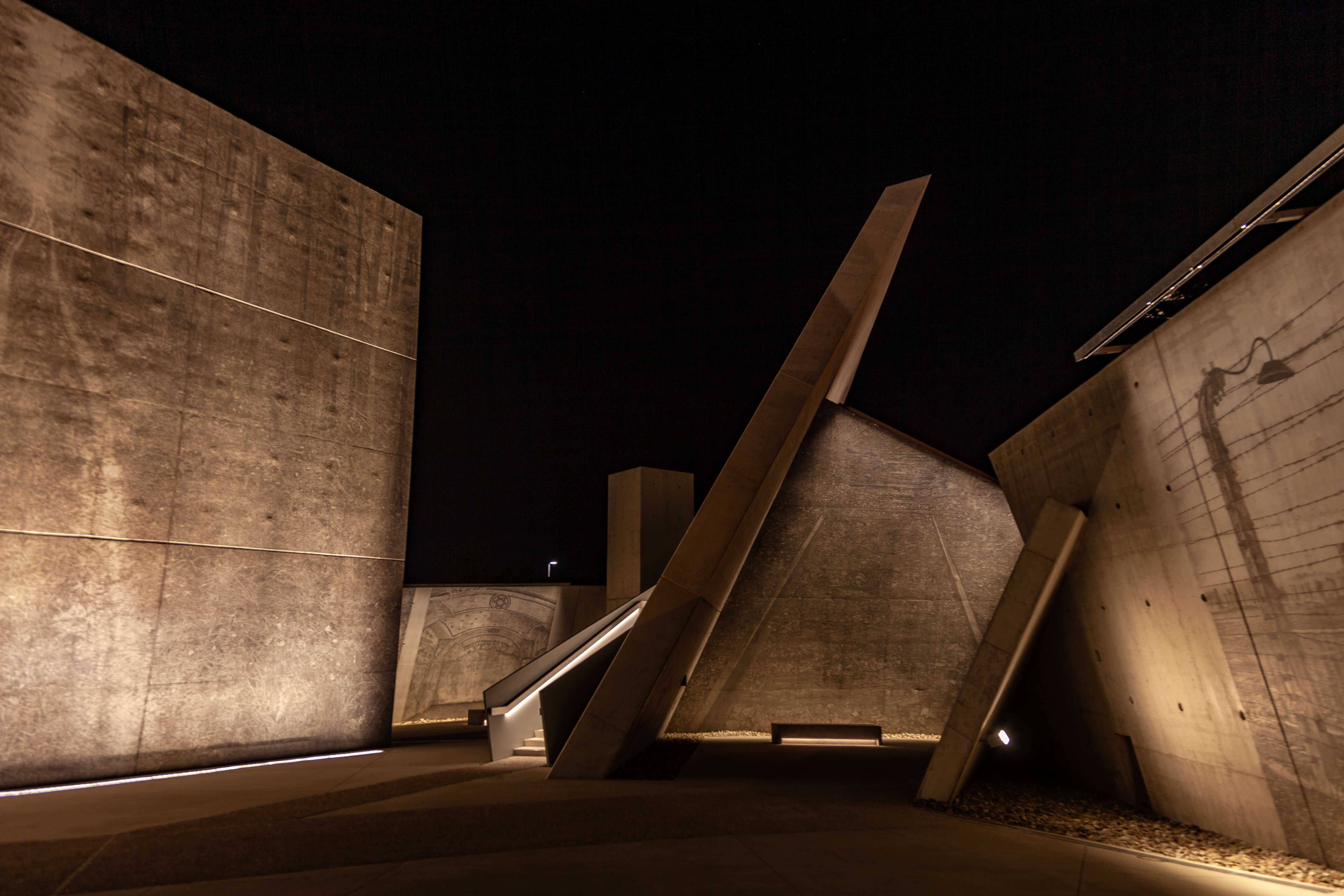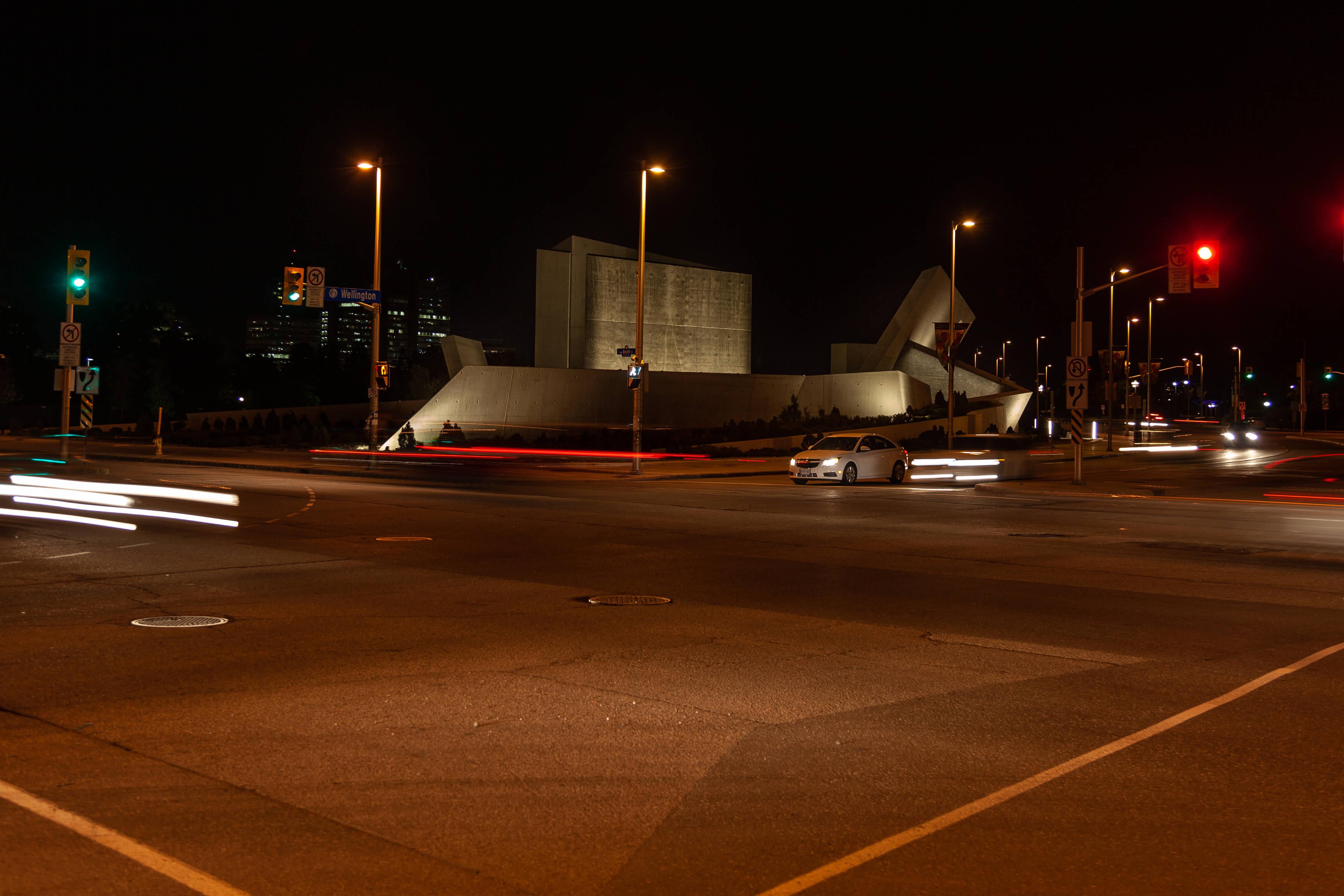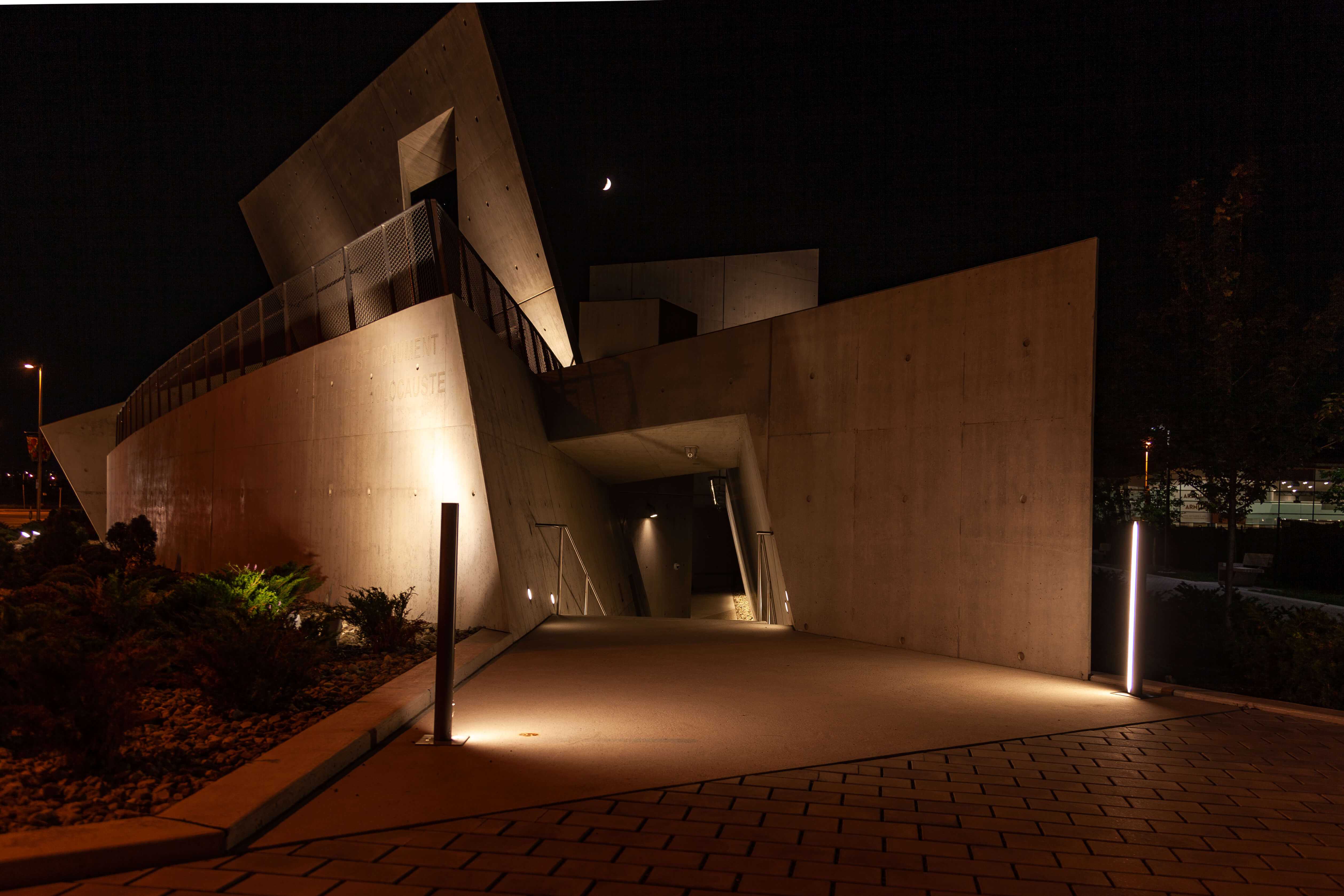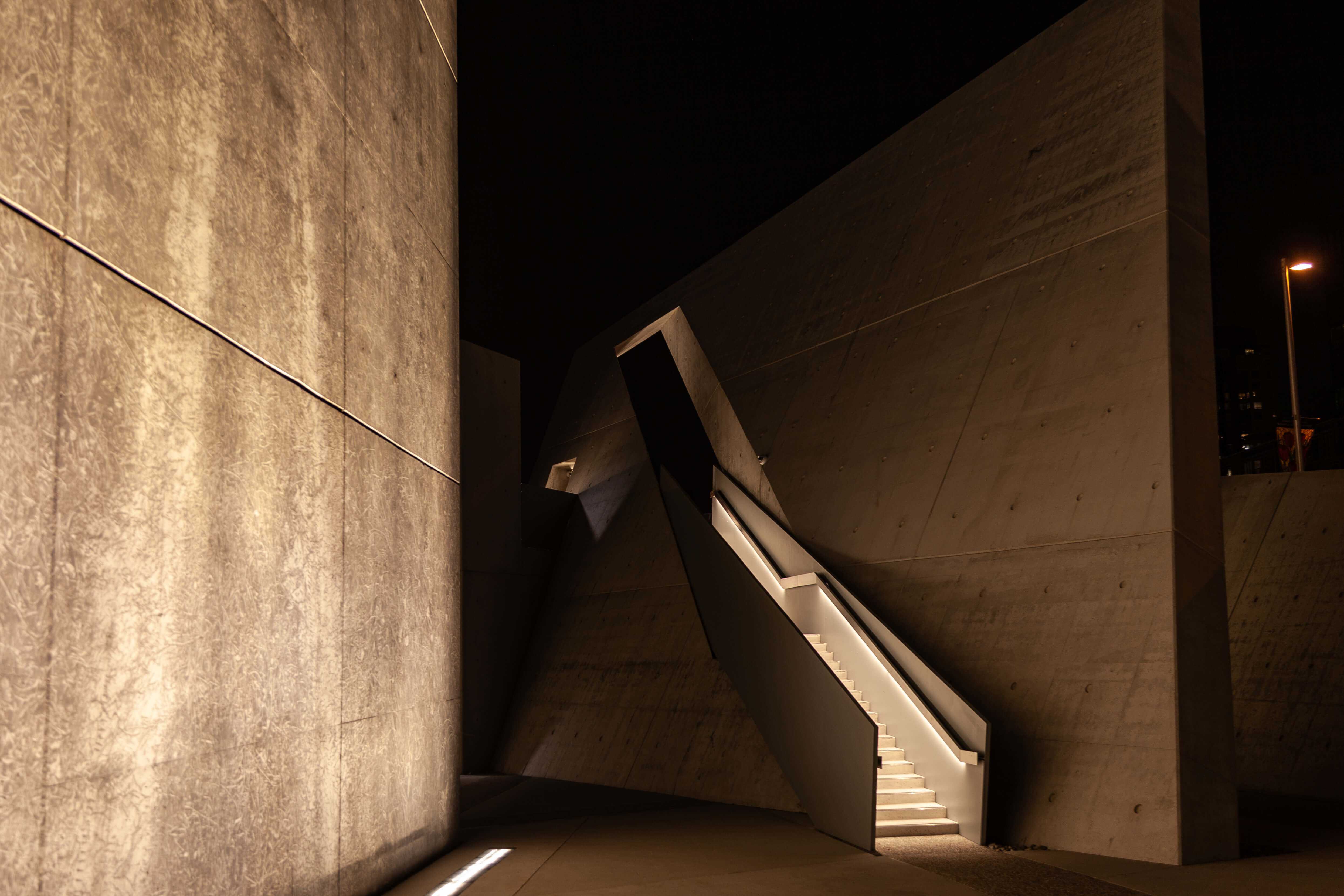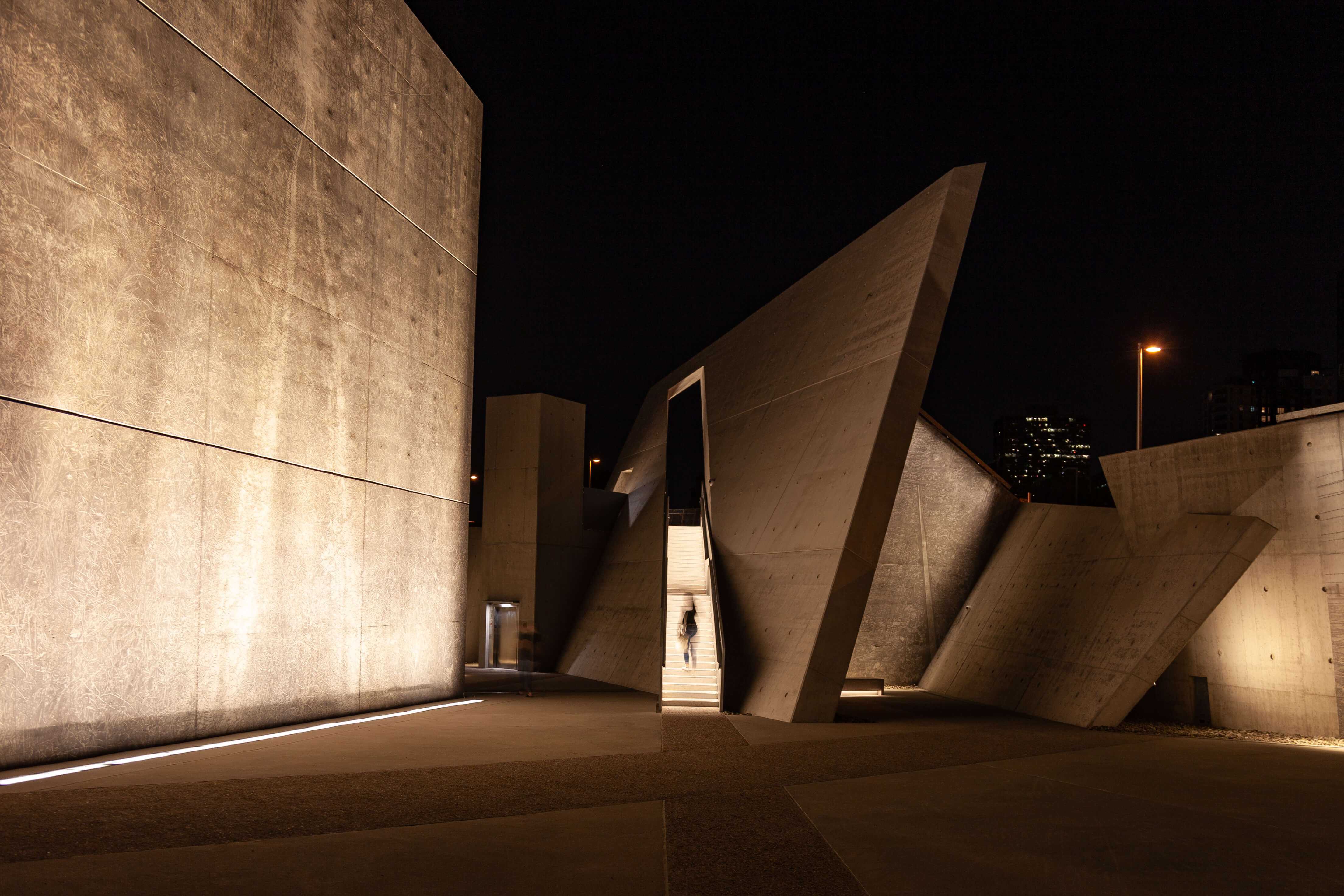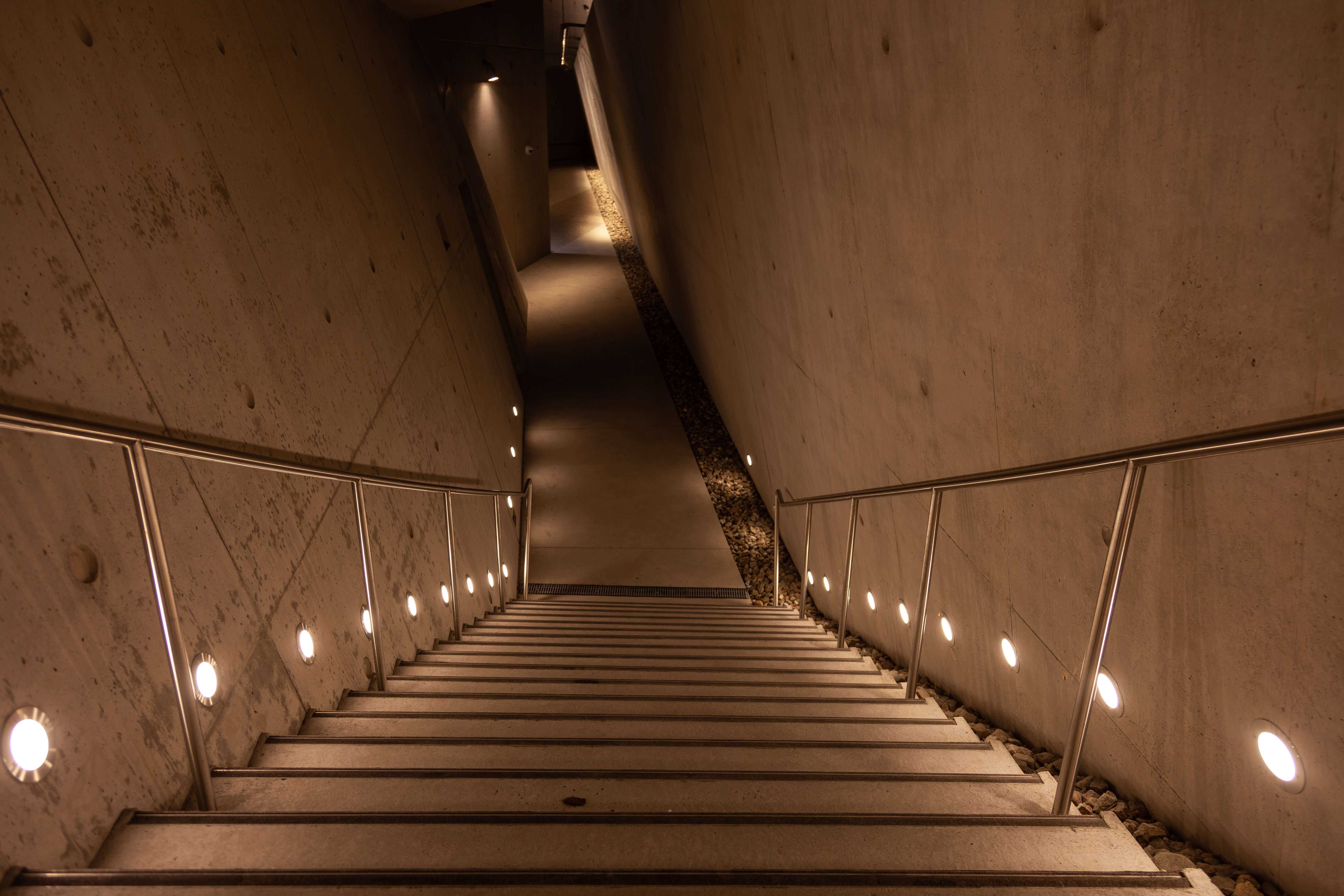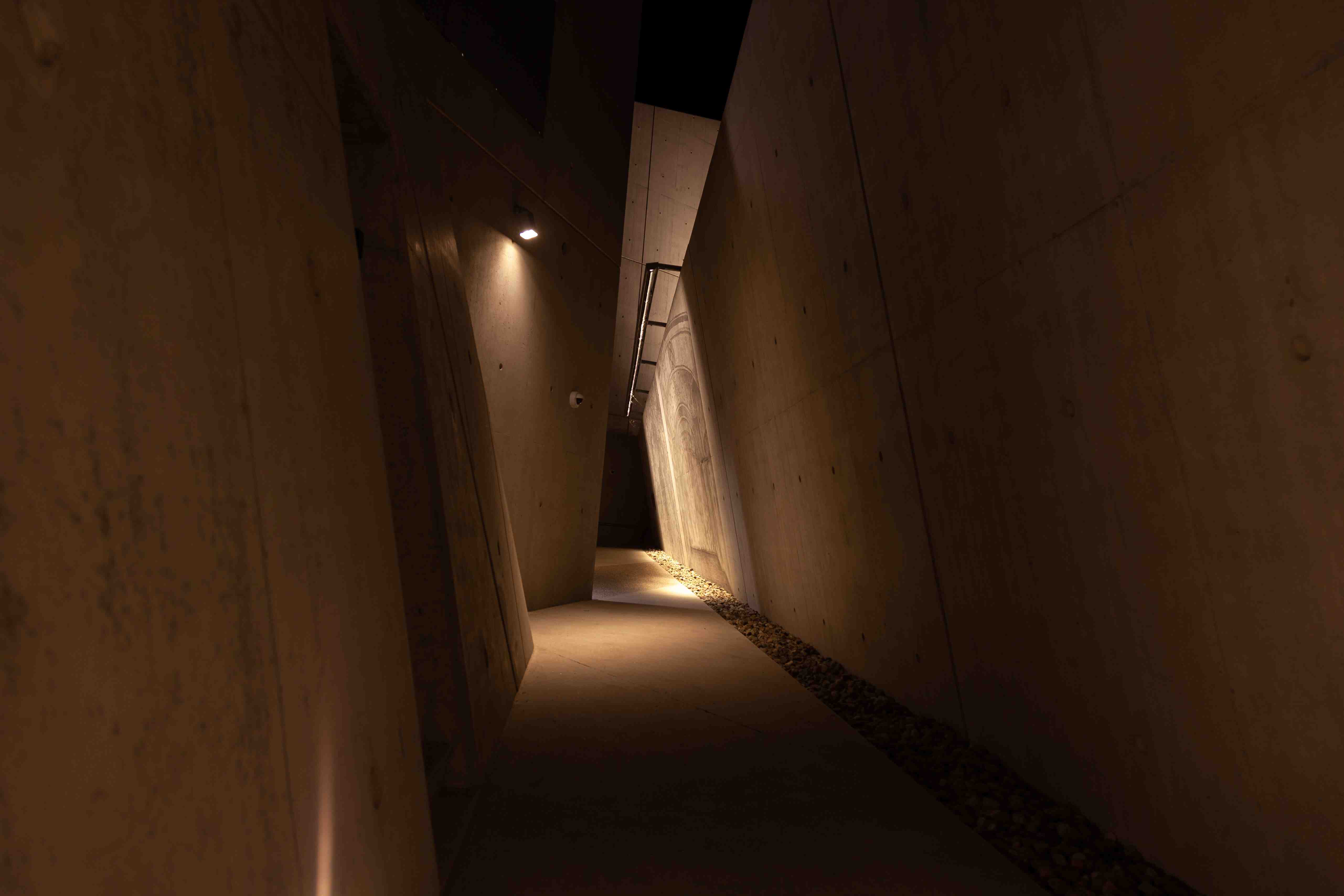Project name
National Holocaust Monument
Proponent
National Holocaust Monument Development Council, Canadian Heritage, National Capital Commission
Architect
Studio Libeskind Ltd., New York
Lighting designer
Focus Lighting, New York
Project description
In September 2017, the Government of Canada inaugurated the National Holocaust Monument at the corner of Wellington and Booth streets in Canada’s Capital. Entitled Landscape of Loss, Memory and Survival, the National Holocaust Monument commemorates the six million Jewish men, women and children murdered during the Holocaust, and the millions of other victims of Nazi-era Germany and its collaborators.
When entering the monument, visitors descend into a sombre space defined by concrete walls that form six triangular volumes, creating the points of a Star of David, surrounding a central gathering space. The walls vary in height and inclination, achieving a dynamic geometry, with views that change as visitors move through and around the monument. A soaring 14-metre-high triangular contemplation space features a Flame of Remembrance, while the Stairs of Hope lead to an upper terrace with views to the surrounding city and the Peace Tower, symbolizing hope for the future.
At night, the lighting provides an evocative visual experience. From outside, it highlights the dynamic geometry and three entry points. From within the monument’s walls, it illuminates key features and spaces. Multiple lighting types were used, depending on the intended effect:
- overhead lights above murals and interpretation panels
- in-ground trough lights for the largest mural, which is 12 metres high
- toe-kick glow provided by strip lighting on the entry ramp and under benches
- glow under the handrail along the Stairs of Hope provided by strip lighting
- bullet lights in the contemplation space, as well as at the Flame of Remembrance, which add to the glow in this space
- bullet lights focused upward on the exterior walls.
It was particularly important for the lighting strategy to consider the Capital Region’s harsh winter climate, which presents some challenges in terms of fixture location and durability.
